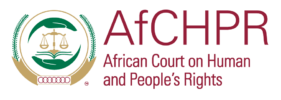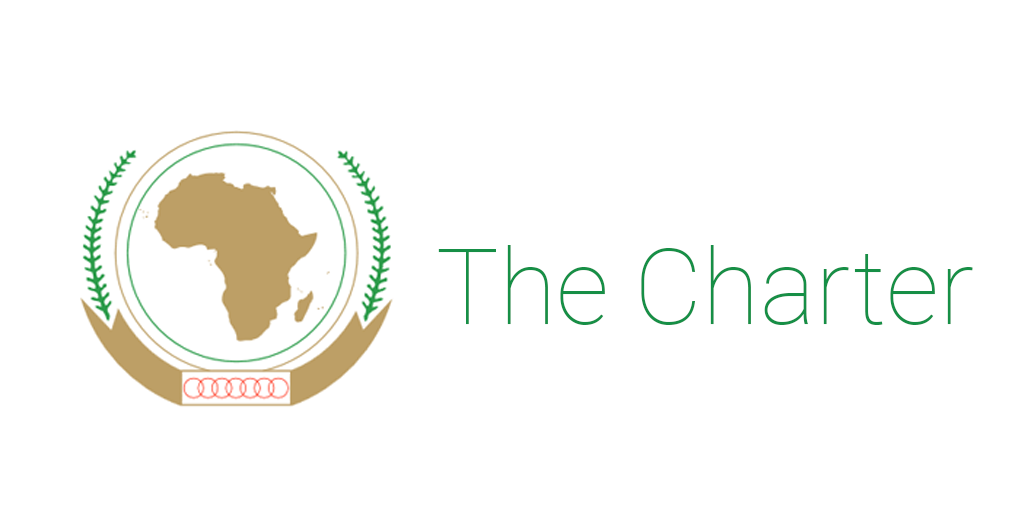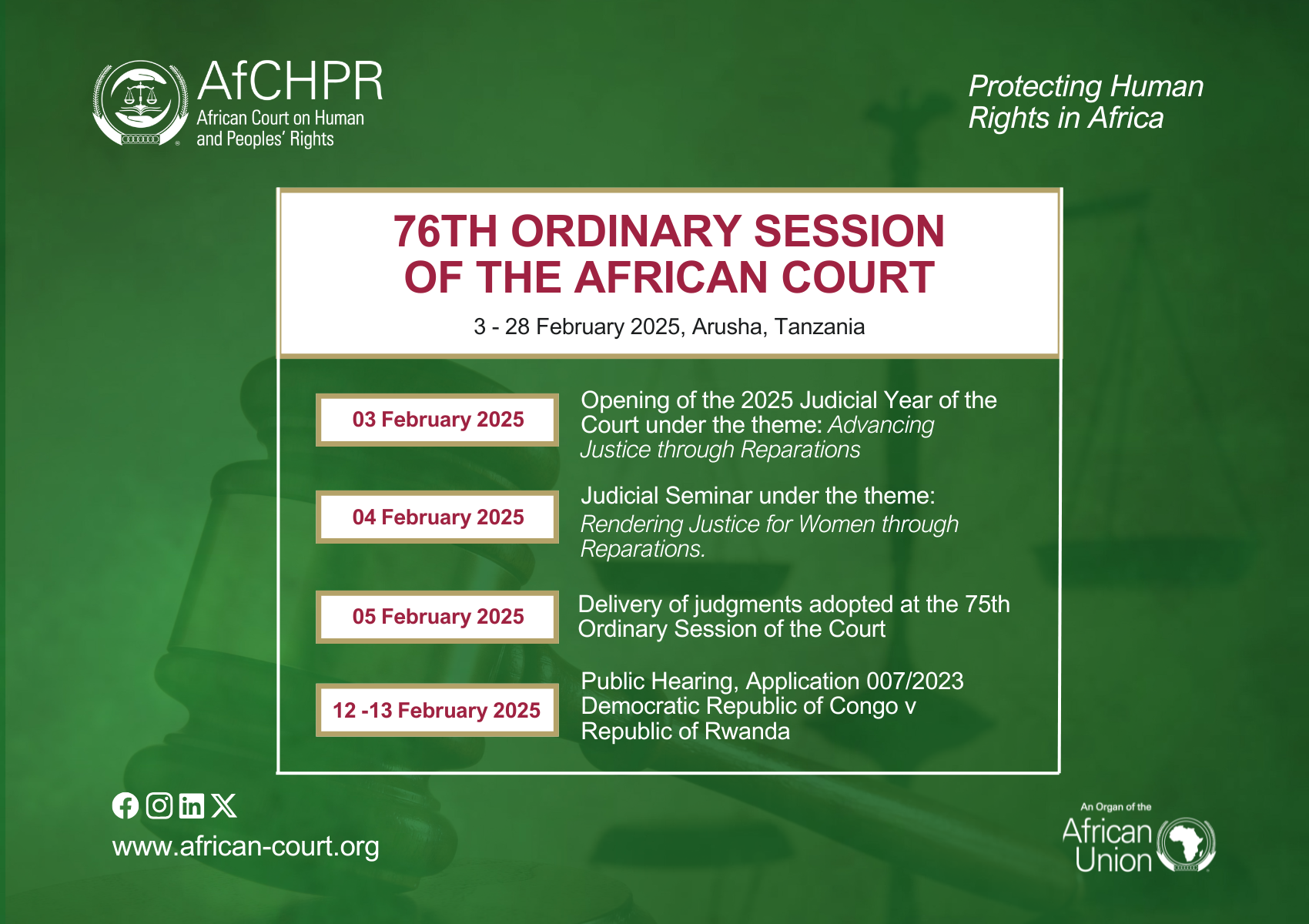KEY NOTE SPEECH
BY
THE HONORABLE JUSTICE GERARD NIYUNGEKO
THE PRESIDENT OF THE AFRICAN COURT ON HUMAN AND PEOPLES’ RIGHTS
ON THE OCCASION OF
THE AFRICAN COURT COALITION ROUND TABLE
20-22 October 2011
Mombasa, Kenya
SALUTATION,
Distinguished Participants, Ladies and Gentlemen
I feel greatly honored to have been invited to make the key note speech during this African Court Coalition Round Table. Allow me to thank the organizers for extending this invitation to me and to our Acting Registrar to participate in this event. This round table is a continuation of the Coalition’s activities to promote the Court, which activities complement and support the Court’s own program aimed at sensitizing stakeholders, including legal practitioners, to ensure that they are aware of how and when to approach the Court on human rights issues, and the challenges they have to overcome to do so.
Distinguished Participants, Ladies and Gentlemen,
Let me remind you that the African human rights system is structured on four levels. Firstly, there is the African Charter system which is normatively based on The African Charter on Human and Peoples’ Rights (the African Charter), the Protocol to the African Charter on the Establishment of an African Court on Human and Peoples’ Rights (Court’s Protocol) and the Protocol to the African Charter on the Rights of Women in Africa (Women’s Rights Protocol). All African Union (AU) Member States are State Parties to the African Charter, twenty six (26) AU Member States are State Parties to the Court’s Protocol and thirty (30) AU Member States are State Parties to the Women’s Rights Protocol. Institutionally, the African Charter system is made up of the African Commission on Human and Peoples’ Rights (the Commission) and the African Court on Human and Peoples’ Rights (the Court). The Commission, a quasi-judicial institution, is the treaty monitoring body for the African Charter and the Women’s Rights Protocol while the Court, being a judicial institution, passes judicial decisions on interpretation of these three normative instruments as well as other relevant human rights instruments.
Secondly, there is the African Children’s Charter system. This system has its normative basis as the African Charter on the Rights and Welfare of the Child (ACRWC). This instrument has fourty six (46) AU Member States as States Parties. The ACRWC has the African Committee of Experts on the Rights and Welfare of the Child (ACERWC) as its treaty-monitoring body which is also a quasi-judicial institution like the Commission.
Distinguished Participants, Ladies and Gentlemen,
Thirdly, we have the Regional Economic Communities’ (RECS) judicial tribunals. The AU recognizes eight RECS. These are: The Arab Maghreb Union, The Community of Sahel-Saharan States (CEN-SAD), The Common Market for East and Southern Africa (COMESA), the East African Community (EAC), The Economic Community of Central African States (ECCAS), the Economic Community of West African States (ECOWAS), The Inter-Governmental Authority on Development (IGAD) and The Southern African Development Community (SADC). Six of these RECs have Courts and/or judicial tribunals: the AMU Judicial Authority, the COMESA Court of Justice, the Community Court of Justice of ECOWAS, the East African Court of Justice, the ECCAS Court of Justice and the SADC Tribunal. These tribunals have varied provisions, particularly on jurisdiction and standing, which impact on their contribution to the strengthening of the African human rights system. It is therefore very appropriate that one of the themes of this roundtable focuses on “Access to Regional Mechanisms for Human Rights Abuses”.
Lastly, the domestic legal system is part of the African human rights system. The principle of subsidiarity means that National courts have primacy for promotion and protection of human rights through interpretation and enforcement of bills of rights in national constitutions, and related legislation as well as enforcement of decisions of international and regional human rights courts and tribunals. With this in mind, the programme for this round table therefore properly accords importance to the enforcement mechanisms for the decisions of the Court.
Distinguished Participants, Ladies and Gentlemen,
Most importantly, I believe that it is very important to start this roundtable by making some reflections on the developments at the Court to date. In that regard, it is relevant that I should advise you that the Court has taken several strides since its operationalization. Following adoption of its Interim Rules of Procedure in June 2008, the Court was able to receive applications. Soon after, the first application Michelot Yogogombaye versus the Republic of Senegal (Application No. 001/2008) was filed. The Court dismissed the matter because Senegal had not made a declaration under the Court’s Protocol allowing individuals and NGOs to directly institute proceedings with the Court, against it.
The Rules were Interim as the Court was yet to meet with the Commission for harmonization of the two institutions Rules of Procedure. Therefore, the Court met with the Commission in July and October 2009 and April 2010 for harmonization of their Rules of Procedure in order to put into effect the principle of complementarity as required by the Court’s Protocol. With the completion of this exercise, the Court has had, since June 2010, final Rules of Court. However, the deliberations in the Yogombaya case, and the discussions during the harmonization exercise with the Commission revealed that the rules had some gaps which required to be addressed. Therefore, since June 2010, the Court is in the process of reviewing its rules, taking into account, input from stakeholders, some of whom are members of the African Court Coalition. Further, the Court has adopted its internal judicial practice, and is finalizing the practice directions for litigants, all of which have benefited from the input f stakeholders.
Distinguished Participants, Ladies and Gentlemen,
During these formative years it dawned on the Court, that its stakeholders do not have adequate knowledge of the Court. They either do not know that it exists, or if they do, they do not know where it is situated or what its powers are. If they do know this, they either do not know that it is ready to receive cases or how to submit applications to it. The Court therefore decided to undertake a sensitization programme targeting different stakeholders.
As a way of establishing contacts and dialogue with other actors in the African human rights system, in October 2010, the Court organized the First Colloquium of African Human Rights Courts and Similar Institutions here in Arusha. This colloquium brought together the continental human rights institutions, namely the Court, the Commission and the ACERWC, some RECS Courts, namely the Community Court of Justice of ECOWAS, the East African Court of Justice and the SADC Tribunal as well as the East African Chief Justices Forum. One of Colloquium’s resolutions was that the colloquium be held biennially. It is planned that that the next colloquium will have representation of all existing RECS Courts and of national judiciaries.
Distinguished Participants, Ladies and Gentlemen,
Soon thereafter, in December 2010, the Court held its first national sensitization seminar. As charity begins at home, naturally, the Court started with its host country Tanzania, with the seminar being held in Dar es Salaam. In March this year, the Court organized a continental awareness-raising conference in Lilongwe, Malawi bringing together stakeholders from across AU Member States.
This sensitization campaign is continuing with the eighth such event being held in South Africa from 24-26 October 2011; and the Court’s utilizing a three-pronged strategy.
Distinguished Participants, Ladies and Gentlemen,
The first strategy is to target States Parties to the Court’s Protocol which have made the Declaration allowing individuals and NGOs direct access to the Court-these being Burkina Faso, Ghana, Malawi, Mali and Tanzania. As indicated, the Court started with Tanzania followed by Malawi, Burkina Faso and Mali; with the seminar for Ghana scheduled for December this year on the margins of the Court’s Twenty Third Ordinary Session. For States targeted under this strategy, the focus is to provide NGOs, individuals and Bar Associations and the wider civil society with the tools they need to access the Court. Therefore the other theme of this round table, on litigation challenges from the lawyers’ perspective is very timely indeed. Courtesy calls are also made to high authorities in government.
The second strategy is to target States Parties to the Court’s Protocol that are yet to make the Declaration, with a view to encouraging them to do so. To this end, the Court plans to meet with State representatives while also meeting with civil society actors urging them to sustain the pressure on their government representatives to make the Declaration. The seminars also provide an opportunity for the Court to pass on information about itself to these stakeholders. Under this strategy, the Court has already visited Uganda and Mozambique, with South Africa due next week as I have already stated and Nigeria being visited in late November/early December.
Distinguished Participants, Ladies and Gentlemen,
Where States have neither ratified the Court’s Protocol, nor deposited the Declaration, the Court employs the third strategy of advocating for such ratification of the Protocol and the deposit of the Declaration. This has mainly been through the AU Summits and other Policy Organs’ for a as well as interactions with States’ representatives.
Therefore round tables such as this one are useful tools in ensuring that all stakeholders share and disseminate information that will enable them to fully utilize the services of the Court as well as to advise others of how they can do so. Your role as the African Court coalition is invaluable in this regard and your deliberations today will, no doubt result in recommendations on the Court’s and your own advocacy agenda.
Distinguished Participants, Ladies and Gentlemen,
You will be pleased to know that the sensitization efforts that you and the Court have undertaken, together or separately, are apparently bearing fruit. Since March this year, the Court has received twelve applications and two requests for an advisory opinion. This response is very encouraging for the Court and shows that stakeholders’ confidence in the Court is growing. The applications received are as follows:
(See attachment)
Distinguished Participants, Ladies and Gentlemen,
The Court has also continued to build on its relationship with the Commission, not only on issues of complementarity but also through regular institutional exchanges at the level of our Bureaux and the Court’s Registry and the Commission’s Secretariat. Contrary to contentions by some scholars that there is tension between our two institutions, the relationship is developing extremely well and our continued interaction is deepening it. While our First Annual Meeting planned for August in Kigali, Rwanda, did not happen, we are working on arriving at another mutually convenient date for this. Further the Court is now always represented at the Opening Ceremonies of the Commission’s Sessions, and both institutions have had occasion to refer cases to each other.
Distinguished Participants, Ladies and Gentlemen,
As one of the themes of this roundtable is to examine the issue of prosecution of International Crimes, I would be remiss if I do not mention the issue of the possible extension of the Court’s jurisdiction to deal with serious international crimes. Following the Assembly of Heads of State and Government of the AU’s (Assembly) examination of the issue of the abuse of the principle of universal jurisdiction in July 2008, in February 2009, the Assembly adopted a decision directing the Commission of the African Union to, in collaboration with the Court and the Commission, examine the implications of the Court being empowered to deal with serious international crimes. The Assembly reiterated this position in another decision taken in July 2010. Most recently, the Executive Council of the AU also reaffirmed this position while meeting in June this year, and as we speak, plans are being made to hold a meeting of government experts followed by a meeting of the Ministers of Justice to finalize this issue at the end of this month.
I would also be remiss if I do not mention the issue of the merger between the Court and the African Court of Justice and Human Rights through the Protocol on the Statute of the African Court of Justice and Human Rights (the Merger Protocol). The Merger Protocol was adopted in July 2008 and is now open for ratification. This means that in effect, the Court is a transitional one as the entry into force of the Merger Protocol is awaited, to facilitate the setting up of the African Court of Justice and Human Rights.
Distinguished Participants, Ladies and Gentlemen,
As you are here to make reflections on the Court, and discuss the litigation challenges for lawyers trying to access the Court, allow me to reiterate the following:
Firstly, the Court’s mission of complementing and reinforcing the functions of the Commission in protecting human and peoples’ rights provides it with an opportunity to further develop the African human rights system and the jurisprudence which has been developed thus far by the Commission. Secondly, the Court’s jurisdiction and applicable law provides it with a wide toolkit to apply towards developing the African human rights system and jurisprudence and charting new grounds for human rights in Africa and internationally. Thirdly, being the only continental judicial body charged with the responsibility of ensuring that the provisions of the Charter are respected and observed places the Court at the apex of the African human rights system and with that, an opportunity to strengthen this architecture and blaze the trail for its future advancement. Fourthly, if the jurisdiction of the Court is extended to cover serious international crimes this will be an opportunity for the Court to contribute to the development and consolidation of international criminal law and to establish a viable human rights culture on the African continent which takes into consideration the continent’s specificities.
Distinguished Participants, Ladies and Gentlemen,
The downside is that several issues will adversely affect your discussions and conclusions of the themes of this round table. In the first place there are only just under half of AU Member States, twenty six (26) in total, that are State Parties to the Court’s Protocol. The Court can only complement the Commission’s protection mandate of the rights guaranteed in the Charter in respect of only the twenty (26) State Parties to the Court’s Protocol whereas the goal is to have universal ratification thereof so that the Court is able to exercise its human rights protective mandate for citizens from all AU Member States.
The limited direct access for individuals and NGOs leaves the Court in a paradoxical situation whereby, it is a human rights Court to which access by individuals, who are the ones who experience human rights violations, is limited. This situation could result in a limited scope of the Court’s judicial protection of human rights.
Secondly, the current structure of the Court’s Registry is inadequate. There are several posts key to the functioning of an international court which are missing in the current Court Registry’s structure. For instance there are no positions of Court reporters, transcribers, recorders and revisers and some departments such as archiving are left out. In addition, the Court has inadequate staff such as legal officers. The support services it needs are also inadequate mainly due to the combination of distinct departments which cannot be manned by one officer currently in place. This has adversely affected the development of major policy documents and institutional development in general.
Lastly, the transitional nature of the Court due to its merger with the Court of Justice of the African Union to form the African Court of Justice and Human Rights makes strategizing difficult. Despite this, the Court is soldiering on, in the belief that it is laying a firm legal and jurisprudential foundation to build on for human rights protection in the African Union, to be developed further by the future African Court of Justice and Human Rights.
Distinguished Participants, Ladies and Gentlemen,
These are but a few of the many issues you will consider in the course of your deliberations. Your recommendations in this regard will be most useful to potential litigants and you as their advisers are duty bound to consider all possible scenarios. I thank you all for taking up the mantle of supporting the Court and the African human rights system generally. No doubt the fruits of such support and collaborations such as this roundtable will lead to the filing of applications, providing research support and/or legal aid to those filing such applications, applying to act as amicus curiae, educating the current and next generation of scholars and practitioners on the Court and the African human rights system and commenting on the Court’s major policy documents. The opportunities for your involvement remain wide open and very welcome.
Thank you for all your attention and I wish you fruitful deliberations!














